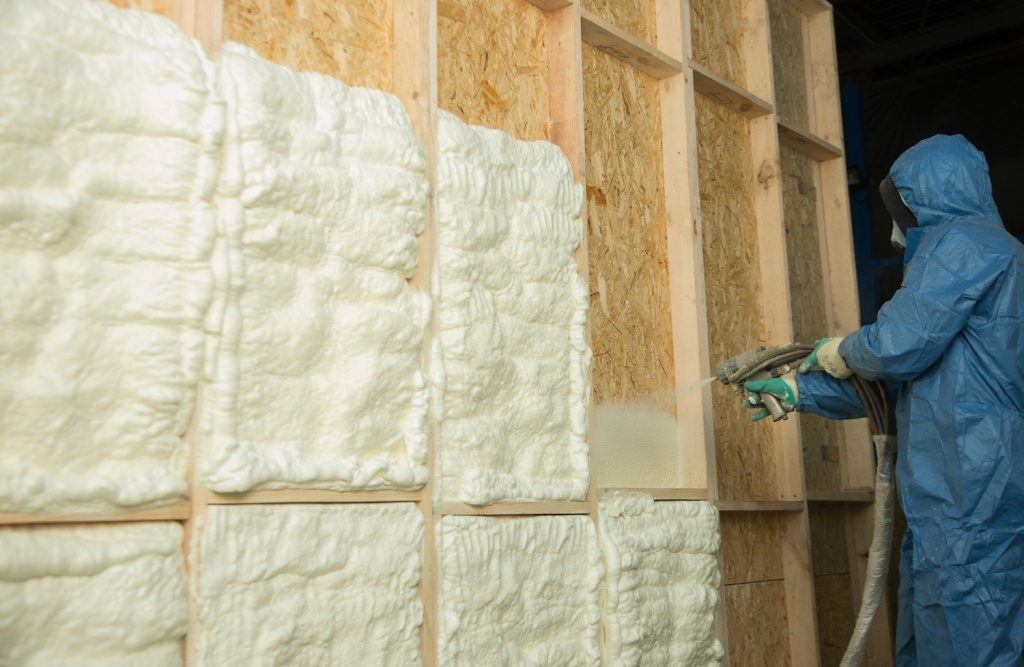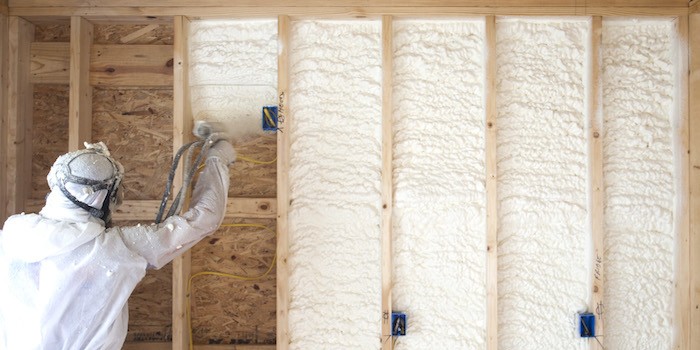Picking the Right Sort Of Spray Foam for Your Insulation Demands
Just How Spray Foam Can Enhance Power Efficiency in Any Type Of Building
Spray foam insulation has actually become a crucial service for enhancing power efficiency throughout different structure types. By developing an airtight seal that lessens air leakage, it properly regulates interior climates while substantially reducing heating & cooling prices. Its remarkable R-value and moisture-resistant residential properties contribute to long-lasting power savings and improved building long life. As homeowner increasingly look for sustainable solutions, the effects of spray foam insulation prolong beyond mere utility financial savings. The complete scope of its benefits, nevertheless, warrants a more detailed examination of exactly how it can transform energy administration methods in both commercial and domestic setups.
Comprehending Spray Foam Insulation
Spray foam insulation is increasingly identified for its premium thermal efficiency and flexibility in different applications. Composed mainly of polyurethane, this insulation material is applied as a liquid that expands upon contact, filling up voids and developing a seamless barrier. This unique building permits spray foam to satisfy uneven surfaces, making it an excellent selection for both household and industrial frameworks.

Application of spray foam insulation is typically executed by experienced professionals utilizing specialized devices, ensuring optimal efficiency and safety and security - Spray Foam. The healing process is fast, enabling quick setup and marginal disruption. Because of this, spray foam insulation is significantly being employed in new building and retrofitting projects as a result of its capability to improve structural integrity while improving overall power effectiveness in buildings
Benefits of Power Performance
Energy performance plays a pivotal function in minimizing functional expenses and decreasing environmental influence across various sectors. By optimizing energy use, home owners and businesses can accomplish substantial cost savings on energy costs, which directly improves financial efficiency. Reliable energy usage means much less dependence on fossil fuels, thereby adding to a reduction in greenhouse gas exhausts and advertising an extra sustainable setting.
Furthermore, energy-efficient structures commonly experience boosted residential property values. As power costs increase and sustainability becomes a concern for customers, properties with boosted power efficiency features are much more eye-catching on the marketplace. This trend urges financial investment in energy-saving technologies, which can even more drive innovation and economic growth.
In addition to environmental and economic benefits, power performance can additionally enhance the overall convenience and health and wellness of interior spaces. Appropriate insulation and reliable cooling and heating systems help keep regular temperatures, lowering drafts and humidity levels, which consequently can lead to much better interior air quality.
Inevitably, the benefits of energy efficiency prolong beyond prompt financial savings, cultivating a resistant economic climate, promoting environmental stewardship, and enhancing the top quality of life for owners in any building.
Just How Spray Foam Works
Generally applied as a liquid, spray foam expands rapidly upon call with surfaces, forming a strong barrier that efficiently secures gaps and fractures. This one-of-a-kind home results from its chemical make-up, primarily consisting of polyols and isocyanates, which respond when mixed to produce a foam that adheres and loads spaces to various products, including steel, wood, and concrete.
When applied, the foam broadens to numerous times its initial quantity, ensuring a tight seal that stops air leakage. This procedure considerably lowers thermal bridging, which occurs when view it warm transfers with materials, resulting in power loss. The foam's high R-value, a step of thermal resistance, adds to improved insulation by reducing warm transfer in between the inside and exterior settings.
In addition, spray foam is immune to wetness and insects, better improving its efficiency in preserving power effectiveness. Its application can be customized to various areas, consisting of attic rooms, wall surfaces, and crawl areas, enhancing insulation across a structure. Spray Foam. In general, the cutting-edge layout and application approach of spray foam make it an efficient option for enhancing power efficiency in any type of structure, leading to decreased power expenses and an extra sustainable built atmosphere

Applications in Different Structures
Countless applications of spray foam insulation can be found across different building kinds, boosting power effectiveness and convenience. In domestic homes, spray foam is frequently utilized in wall surfaces and attics to create a seamless barrier versus air leakages, considerably decreasing home heating and cooling needs. This application is especially valuable in older homes, where traditional insulation might be insufficient.
In business buildings, spray foam insulation is used to roof systems and exterior walls, which aids to improve thermal efficiency and shield versus moisture breach. Its lightweight nature makes it an excellent selection for retrofitting existing frameworks without adding substantial weight. In addition, spray foam can be used in industrial settings to insulate pipelines and tank, maintaining temperature level control for delicate products.
Institutional structures, such as schools and health centers, gain from spray foam insulation by guaranteeing a regular interior environment that sustains resident comfort and wellness. The adaptability of spray foam allows it to adapt to different structure forms and sizes, making it a recommended choice for architects this content and building contractors looking for reliable insulation services. In general, spray foam insulation works as a crucial part in attaining energy-efficient buildings throughout all sectors.
Long-Term Cost Financial Savings
Spray foam insulation supplies considerable long-term expense savings for building proprietors and owners by reducing power intake and reducing utility costs. By providing an exceptional air seal, spray foam decreases the seepage of outside air, therefore enhancing the thermal efficiency of a structure. This causes extra efficient home heating and cooling procedures, which can result in significant decreases in power prices with time.
Along with immediate financial savings on energy expenses, the sturdiness and durability of spray foam insulation add to its monetary advantages. Unlike conventional insulation materials, which might droop, settle, or weaken, spray foam preserves its performance for years, minimizing the need for regular replacements or repair services. This longevity equates to reduce maintenance expenses and less disruption for residents.
Additionally, buildings geared up with spray foam insulation typically enjoy a boost in building value, making them much more enticing to prospective buyers or lessees. As energy performance ends up being progressively prioritized, homes with efficient insulation options stick out in the market. Inevitably, the integration of spray foam insulation not just enhances comfort yet additionally stands for a tactical investment that produces substantial economic benefits over the long-term.
Verdict
Finally, spray foam insulation functions as a crucial part in boosting energy effectiveness throughout varied structure types. Its ability to produce a seamless obstacle versus air leak, incorporated with high R-values and moisture-resistant buildings, substantially lowers power consumption and connected costs. The execution of spray foam not just contributes to consistent indoor temperature levels but additionally boosts home value, underscoring its function as a prudent investment for both business and property homes.
Spray foam insulation has emerged as a critical service for improving energy effectiveness throughout different structure kinds. Spray Foam. As an outcome, spray foam insulation is increasingly being utilized in brand-new building and retrofitting projects due why not try this out to its ability to improve structural integrity while boosting total power performance in buildings
Overall, the innovative layout and application approach of spray foam make it a reliable solution for boosting power effectiveness in any structure, leading to decreased energy expenses and a much more lasting built setting.
Many applications of spray foam insulation can be discovered across different building types, boosting power efficiency and comfort.In conclusion, spray foam insulation serves as a crucial element in enhancing energy efficiency throughout varied building types.